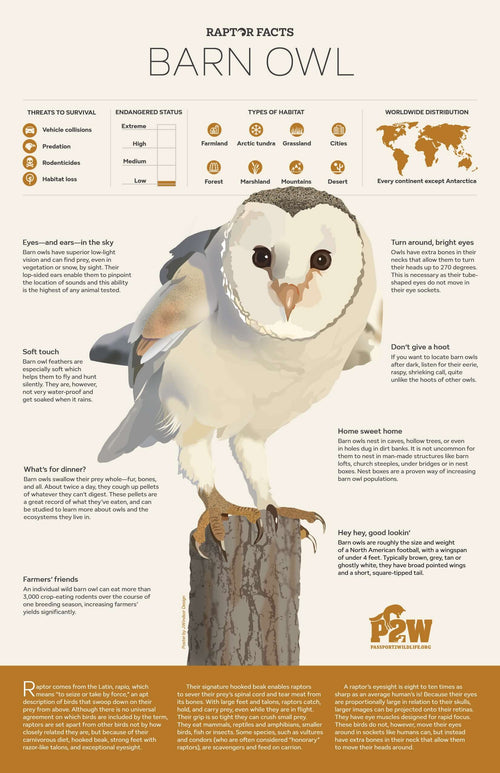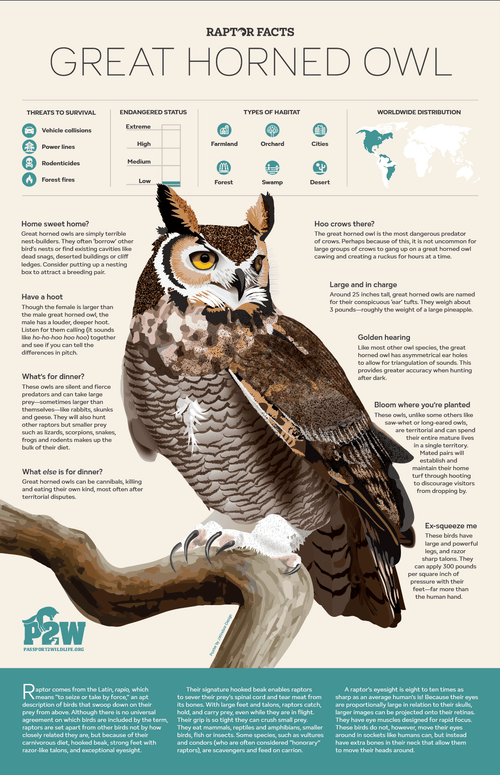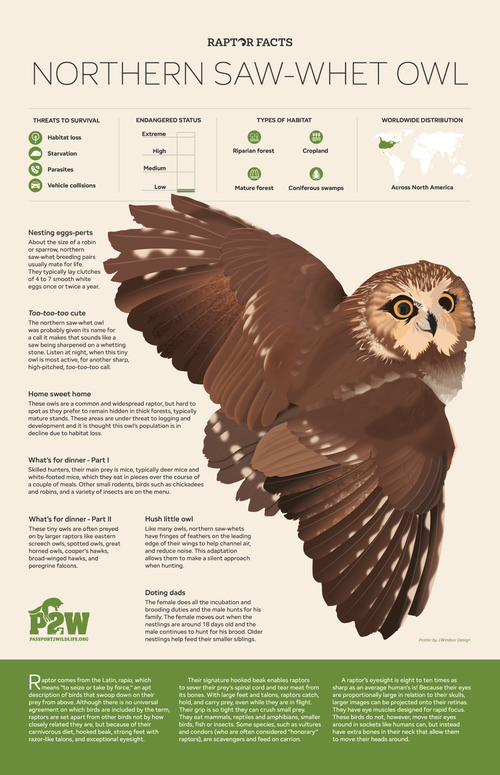No Products in the Cart
Owls, Fields & Thanksgiving Feasts: How Our Favorite Dishes Touch Owl Habitats

From Field to Feast: What’s Really on the Table?
When you look at a classic American Thanksgiving plate, you’re really looking at a map of habitats:
- Turkey – raised in barns and on pastures
- Mashed potatoes – grown in wide, open fields
- Stuffing & dinner rolls – made from wheat and corn stored in silos and barns
- Pumpkin pie – pumpkins grown in sprawling vine fields
- Corn dishes – from big, open cornfields and grain bins
- Cranberry sauce – from wet bogs and marshy landscapes
To us, it’s a cozy meal.
To owls, it’s an entire nighttime landscape: barns, fence posts, ditches, field edges, and wet areas that are busy with rodents and other small animals after dark.
Those mice and voles sneaking into grain bins and running between rows of corn and pumpkins?
They’re exactly what many owls are hunting.
So even though owls don’t show up on the guest list, they’re quietly woven into the story of our Thanksgiving ingredients.
The Silent Farm Helpers: How Owls Guard Our Grain
Many farms that grow Thanksgiving ingredients are also prime owl territory:
- Barn owls nest in haylofts, old silos, and owl boxes.
- Great horned owls patrol fence lines and treelines.
- Short-eared owls cruise low over open fields and grasslands.
Where you have grain + storage + cozy hiding spots, you have rodents. Where you have rodents, you could have a rodent problem—or you could have owls doing pest control for free.
A single barn owl family can eat thousands of rodents in a year, removing grain-stealing mice and voles that chew on stored corn, wheat, and feed for turkeys. That means:
- Less crop loss in corn and wheat fields
- Less damage to stored grain for stuffing, pies, and rolls
- Less contamination in barns where turkeys are raised
In other words, every time an owl drops silently off a beam to catch a mouse, it’s helping protect the very ingredients that end up on our Thanksgiving tables.
Fun fact: Some farmers now install owl nest boxes specifically to attract barn owls as part of “natural pest control,” reducing their need for chemical rodent poisons.
When Dinner Fights Back: Rodenticides, Pesticides & Owls
Of course, not every farm relies on owls.
To protect grain and poultry barns, some farms use rodenticides (poisons for rats and mice) and heavy insecticides in fields. These can have serious side effects for owls:
Rodent Poisons & Owls
- Mice and rats eat bait in barns, feed rooms, or around grain bins.
- An owl catches those “easy” poisoned rodents.
- The poison can build up in the owl’s body over time.
Owls don’t read warning labels—they just see a slow, clumsy mouse and think “perfect snack.”
But second-generation rodenticides are especially dangerous, because they stay in the rodent’s body long enough to travel up the food chain.
For students, you can frame it simply:
“If the mouse is poisoned, the owl that eats the mouse can be poisoned too.”
Field Sprays & Food Webs
Some classic Thanksgiving crops—corn, potatoes, green beans, even cranberries—may be grown with strong insecticides and herbicides. Those don’t usually kill owls outright, but they can:
- Reduce insect populations that small mammals feed on
- Change plant diversity along field edges
- Reduce the abundance of small creatures that make up the owl’s prey base
Fewer bugs and plants → fewer rodents, frogs, and small animals → less food for owls.
So our demand for cheap, perfect ingredients can sometimes tug on the threads of the nighttime food web that owls depend on.
Cranberries, Cornfields & Pumpkin Patches: Hidden Owl Habitat
Thanksgiving foods don’t just come from fields; they come from edges—the messy, wild margins where owls love to hunt.
- Corn & grain fields: Field edges, grassy ditches, and old fence posts make perfect hunting routes for owls watching and listening for mice.
- Potato and pumpkin fields: When farmers leave grass strips, hedgerows, or scattered trees, owls get safe perches to scan for prey. When everything is cleared to the bare minimum, there’s nowhere to sit, nest, or roost.
- Cranberry bogs & wetlands: The surrounding forests and snags (dead trees) can host owls that hunt along the wet margins at night. Turn everything into manicured edges and bright lights, and the nighttime hunting grounds shrink.
A nice way to explain this to kids is:
“Owls don’t just need food; they need places to sit, hide, and raise babies near that food.”
When we favor tidy, “clean” landscapes—no brush piles, no old trees, no messy corners—we sometimes scrub away the very features owls rely on.
Turning Your Thanksgiving Plate into a Food-Web Lesson
Here are two easy, classroom-ready ways to connect Thanksgiving recipes and owl ecology.
1. “Owl-Friendly Plate” Mapping Activity
Have students draw a Thanksgiving plate (turkey, potatoes, stuffing, corn, pumpkin pie, etc.).
For each food, ask:
- Where does this grow or come from? (field, barn, bog, orchard)
- What animals might live there?
- Where could an owl fit into this picture?
Use arrows to connect:
- Grain → mice → owl
- Wetland edges → frogs/small mammals → owl
- Barn → rats/mice eating spilled feed → owl
This helps students see their meal as part of a larger food web, not just a list of recipes.
2. “Owl-Safe Thanksgiving” Brainstorm
In small groups, have students design a more owl-friendly Thanksgiving by:
- Listing ways a farm could protect crops without relying heavily on poisons
- Suggesting habitat features that help owls (owl boxes, leaving a hedgerow, preserving a big old tree)
- Writing a short class “pledge” about making food choices that are kinder to wildlife
You can even connect this to writing standards by having students turn their ideas into persuasive letters to a “farmer,” “mayor,” or “future self.”
Product Spotlight: Bringing Owls & Food Webs to Life with OBDK
To make these ideas feel real—especially for younger learners—it helps to put visuals and models in their hands, not just on the board.
- Owl & Prey Posters / Wildlife & Nature Posters These kinds of visuals (like the ones OBDK offers) show owls alongside the small mammals they eat, making it easier for students to picture how an owl connects to a farm field or barn full of grain.
- Bees, Bats & Owl Boxes–style habitat kits Hands-on habitat kits that include owl boxes or other wildlife shelters (like OBDK’s nature and wildlife kits) help students imagine where an owl might nest near a field or barn.
You can pair a Thanksgiving food-web lesson with a discussion of how an owl box on a farm can replace some rodent poisons with natural pest control.
You might set up a “Farm at Night” corner in your classroom with:
- A poster of an owl and its prey
- Strings or arrows connecting those prey to pictures of corn, wheat, and pumpkin fields
- A cardboard “owl box” model students can decorate
That way, when students think about stuffing or pumpkin pie, they’ll also think of the owl silently gliding over the fields where those crops grow.
Teacher Takeaway
Thanksgiving isn’t just about what’s on the table—it’s about the landscapes and living things that made that feast possible.
Owls:
- Keep rodent populations in check around barns and grain fields
- Help protect stored feed and crops that go into our classic recipes
- Are put at risk when rodenticides and heavy chemical use break the food web they depend on
By showing students how a single plate of food connects to barns, fields, wetlands, and nighttime hunters like owls, you turn a holiday unit into a powerful lesson on ecology, stewardship, and gratitude for the natural systems that quietly support us all.




